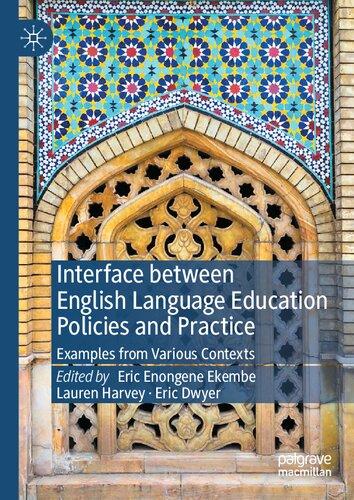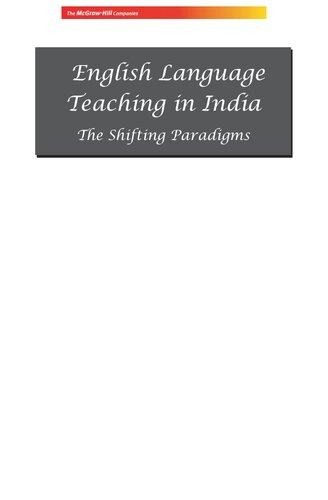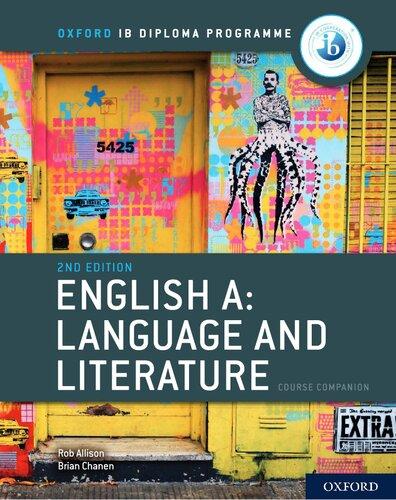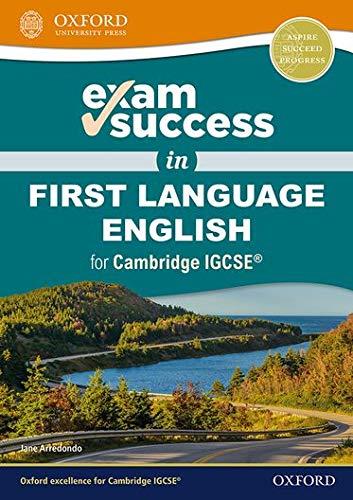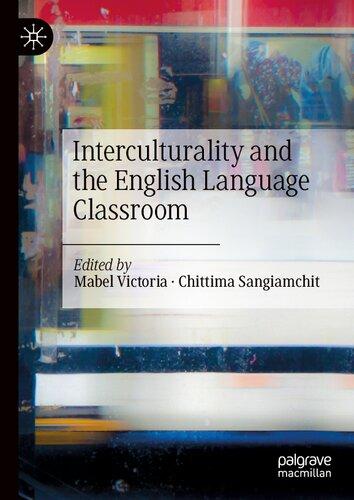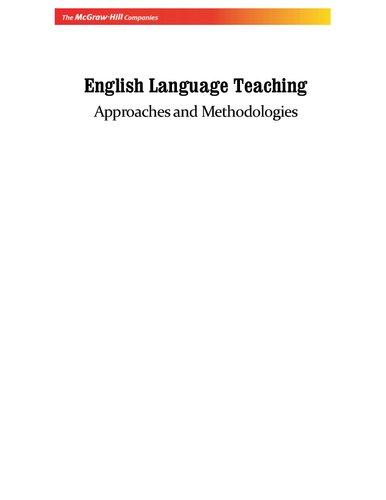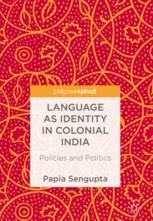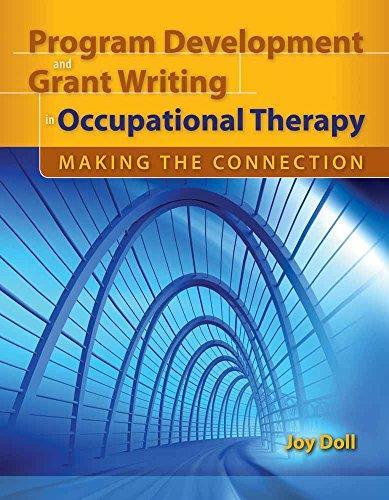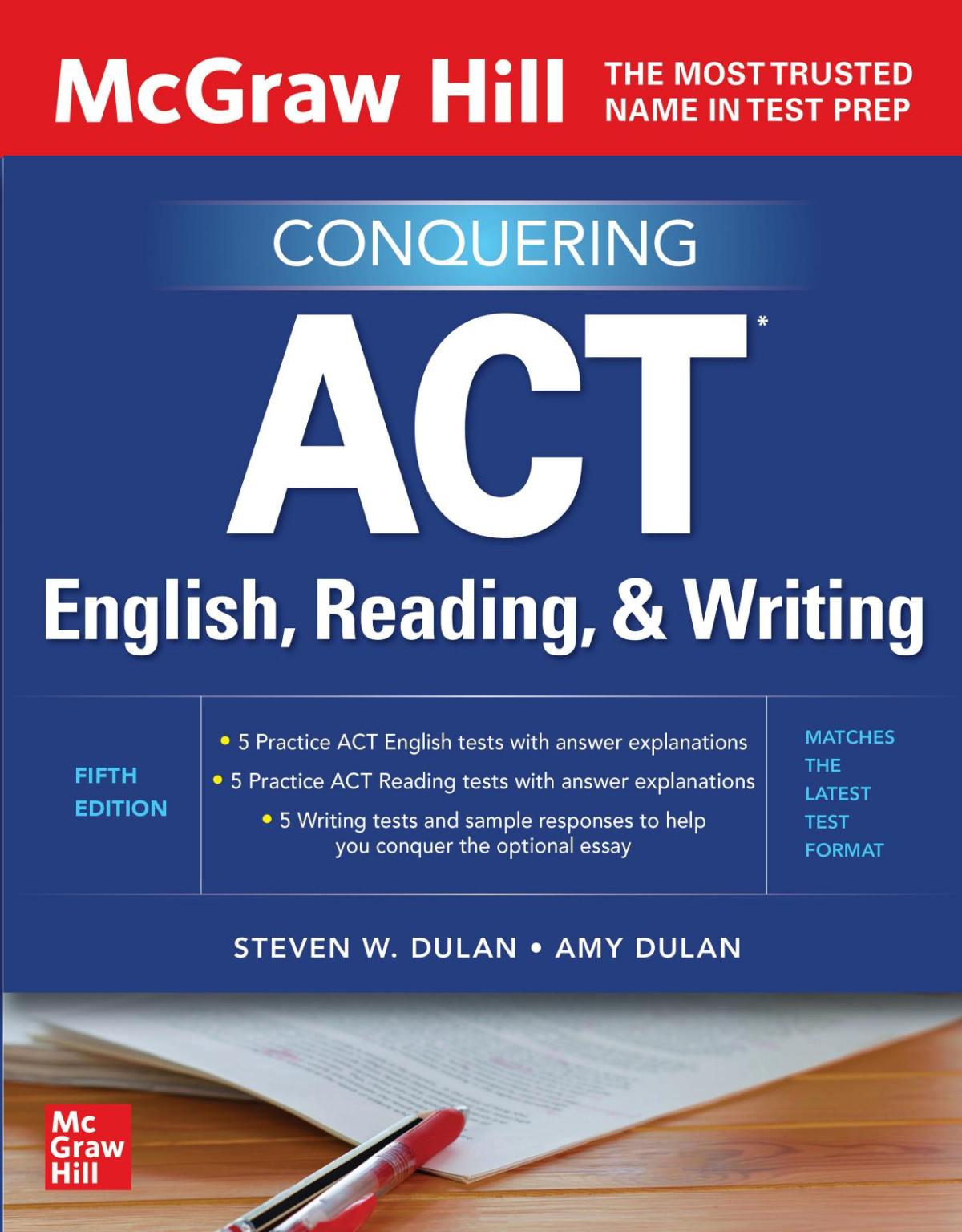Acknowledgments
Many people helped me write this book. Thank you especially to everyone who agreed to an interview or donated their papers to a university archive. If people had not generously shared their time, texts, and perspectives, this book could not exist.
Archivists were instrumental in making my research possible at the Bentley Historical Library at the University of Michigan, the Hoover Institution Library & Archives at Stanford University, and the Special Collections Research Center at the George Washington University. In particular, I am indebted to Diana Bachman, Nancy Bartlett, Bronweyn Coleman, Karen Jania, Kathy Lafferty, Gayle Martinson, Malgosia Myc, Caitlin Moriarty, Cinda Nofziger, Sarah Patton, Corinne Robertson, Joni Rosenthal, Danielle Scott Taylor, and Kierra Verdun for their expertise.
I worked with four talented research assistants. Shelby Gordon located, sifted, and sorted through many of the contemporary news sources and gave perceptive feedback on an early draft of Chapter 4. Amy LaFleur and Carolyn Angelo did impeccable work on archival research and reviewing the contemporary literature in sociolinguistics. Makayla Camp read early chapter drafts and prepared citations with aplomb.
My students, too, have shaped and reshaped much of my thinking about how writers navigate language. I owe a debt of gratitude to my students in First-Year Writing, Writing across Media, Professional Writing, Language and Society, and Structure and Variation of the English Language.
For funding this research, I would like to thank the Bentley Historical Library, for their Bordin/Gillette Research Travel Fellowship, the Hoover Institution Library & Archives, for their Scholar Research Support Award, the Conference on College Composition and Communication (CCCC), for their Emergent Researcher Award, the University of Illinois Urbana-Champaign, Mississippi State University, and the University of Massachusetts Lowell.
At the University of Washington, Gail Stygall first sparked my interest in language policy and the English language. I was also lucky to work with so many excellent mentors there who taught me about language, writing, and research, including Todd Borlik, Anne Browning, Jamie Oldham Feather,
Acknowledgments
Gillian Harkins, Becca Herman, Emily James, Rick Keil, Colette Moore, Michael Oishi, Tanvi Patel, Paul Quay, and Johnny Stutsman.
The Center for Writing Studies at the University of Illinois UrbanaChampaign was the ideal place for me to push my research further. Paul Prior, Dennis Baron, Spencer Schaffner, and Michèle Koven totally transformed how I approached research, both by showing me what it could look like and by spending countless hours helping me make sense of my own work. Andrea Olinger welcomed me to Illinois and has continued to be an awe-inspiring and dear friend ever since. Annie Kelvie makes this work meaningful and fun – she always knows the right thing to say, and she helps me keep everything in perspective. Yu-Kyung Kang showed me it was possible to foreground language, literacy, and the local, and her work continues to inspire my own. Lindsay Rose Russell offered peerless advice during the late stages of the writing process. I am also grateful to many other colleagues I first met in ChampaignUrbana, including Paul Beilstein, Teresa Bertram, Andy Bowman, María Paz Carvajal Regidor, Anne Haas Dyson, Melissa Forbes, John Gallagher, Bonny Graham, Evin Groundwater, Lauri Harden, Douglas Kibbee, Gesa Kirsch, Bruce Kovanen, Allison Kranek, Eileen Lagman, Adrienne Lo, Kristi McDuffie, Thomas McNamara, Logan Middleton, Catherine Prendergast, Eric Darnell Pritchard, Jenn Raskauskas, Pamela Saunders, Maggie Shelledy, Kaia Simon, Siobhan Somerville, Jonathan Stone, Nicole Turnipseed, Kate Vieira, Amy Wan, Carolyn Wisniewski, Vivian Yan-Gonzalez, and Dan Zhang.
Scott Wible showed me it was possible to write the kind of book I wanted to write and to have the kind of career I wanted to have. He has paved the way for me in many ways.
My colleagues at Mississippi State University were exceptionally supportive and they made the research process fun. My writing group friends, Elizabeth Ellis Miller and Melanie Loehwing, were at once great company and great role models for how to write about activism and advocacy. My department head, Daniel Punday, helped me in many ways, not least of which was graciously matching my CCCC grant with an additional course release, which gave me a semester to focus on writing. Dhanashree Thorat was there for me, especially during lockdown. I am also grateful to Ted Atkinson, Diana Brown, Xi Chen, Shalyn Claggett, Lara Dodds, Kayleigh Few, Taylor Garner, Aaron Grimes, Margaret Hagerman, Wendy Herd, Holly Johnson, Anne Marshall, Lisa McReynolds, Ginger Pizer, Donald Shaffer, Megan Smith, Eric Vivier, Abigail Voller, and Jervette Ward.
I wrote several chapters and navigated the publishing process at the University of Massachusetts Lowell. Thank you to Luis Falcón and Todd Tietchen for the opportunity. Jenna Vinson and Robert Forrant provided invaluable feedback on an early draft of my book proposal. Anthony Szczesiul gave me crucial comments on a draft of my introduction. Bridget Marshall advised me at the
contract stage. Rebecca Richards led by example and cheered me on every step of the way. Ann Dean created space for conversations about writing, and at one point she wrote me to say, “Your goals should be (a) survive, (b) work on your book. Everything else can wait,” which is the best thing someone can say. Stacy Szczesiul, Sue Kim, Christa Hodapp, and Darcie Boyer brought junior women faculty in Fine Arts, Humanities, and Social Sciences together for valuable mentoring and camaraderie. Julie Nash created the opportunity to do the Faculty Success Program, where I was lucky to work with coach Dione King and group members Nozomi Tanaka, Rebekah Slodounik, and Hwanhee Hong. I am fortunate to be going through the assistant professor experience with friends like Larissa Gaias, Anita Li, and Kristen Stern. Rose Paton and her colleagues at the University Library helped me track down dozens of sources through Interlibrary Loan. I have benefited from so many conversations with Sara Backer, Laura Barefield, Shelley Barish, Dina Bozicas, Rosemarie Buxton, Mary Kate Cragg, Katherine Conlon, Kelly Drummey, Bernardo Feliciano, Milena Gueorguieva, Paula Haines, Natalie Houston, Andrew Johnson, Jacqueline Ledoux, Sean McCreery, Tracy Michaels, Keith Mitchell, Shaima Ragab, Nancy Selleck, Richard Serna, Katherine Shrieves, Jonathan Silverman, and Wilson Valentín-Escobar.
I wrote Chapter 1 last. When I was stuck, Brendan O’Connor’s work helped me realize that I should try to follow the money.
Helen Barton, Isabel Collins, Christian Green, Snadha Suresh Babu, Edward Street, and their colleagues at Cambridge University Press have expertly shepherded the manuscript through the publishing process. Thomas Ricento and the anonymous reviewers were uncommonly brilliant and generous, and they motivated me to keep writing and revising.
Parts of Chapter 3 first appeared as “Upscaling and downscaling: Negotiating scale in the English-only movement,” in the Journal of Sociolinguistics, 25(2), 235–252, copyright © 2021, published by John Wiley & Sons Ltd. An earlier version of Chapter 4 first appeared in 2019 as “Resisting and rewriting English-only policies: Navigating multilingual, raciolinguistic, and translingual approaches to language advocacy,” in Literacy in Composition Studies, 7(1), 67–89.
Finally, I owe everything to my family, especially Jean Luchi, Garner Vogt, Patty Vogt, Alex Vogt, Victor Vogt, Lisa Vogt-Wolfgang, Max Wolfgang, Marie Poage, Debbie Streck-Black, David Black, Ann Black, Jenna Black, Thomas Black, Amanda Hightower, Velma Black, Emily Kesheimer, Benjamin Flowers, Otero Flowers, James Flowers, and Mike Black. Thank you all for being so generous, funny, supportive, and patient.
Introduction
On November 11, 2000, the executive director of the organization ProEnglish, K. C. McAlpin, gave a speech at the Social Contract Writer’s Workshop called “Language as the entry point for the debate: Population numbers, immigration policy, culture.” The speech proposed language as a litmus test of who belongs in the United States and who does not. McAlpin (2000) described “multilingualism” as “troubling” (p. 124). From this perspective, people who have “no intention of abandoning their native language” are a sign of “the growing occupation of our land by alien cultures” (McAlpin, 2000, pp. 123–124). But to whom exactly was he referring? The speech touched on several different (albeit overlapping) groups, including “Hispanic” people, “East Indian” people, “Muslims,” and “Native American groups” (pp. 123–124). The inclusion of Native Americans is one particularly telling clue that this discussion is not just about immigration – it is about perceptions of language, race, and citizenship more broadly.1
After establishing who he saw as the problem, McAlpin (2000) suggested a solution: making English the only official language. The reasoning was that “the official English movement gives us the rare opportunity to play offense. We can capitalize on this to force the issue wherever we can – through initiatives and laws to scrap bilingual education, declare English our official language, and overturn executive actions via the courts” (p. 124). A number of assumptions appeared to be in play: that multilingualism is new; that multilingualism is bad; that people of color deserve scrutiny; and that white people do not. These beliefs are not necessarily novel; what set the speech apart was its strategy. This speech anticipated an approach that would go on to play a key role in language policy in the twenty-first-century United States: making English seem like an at-risk language in need of community protection. Language policy includes any institutional efforts to shape how people learn, view, or use a language, and the English-only movement exemplifies how piecemeal those
1 On language, race, citizenship, and other identities as intertwined social constructions, see Brayboy (2005), Zentella (2014), Rosa and Flores (2017), Balzhiser, Pimentel, and Scott (2019), and Khan (2020).
efforts can be: The operative phrase here is “wherever we can” (McAlpin, 2000, p. 124).2 While the United States has never had an official language, localized English-only campaigns have proved more successful. Since 1980, twenty-six states,3 along with at least eighty-three city and county governments, have made English the only official language.4 These policies serve as symbols: As one activist put it, enacting one of these policies is like putting out an “unwelcome mat” (Wilgoren, 2002, July 19). Activists and politicians have spent decades testing and refining this approach.
Underlying this English-only movement is the idea that language is a zerosum game: In order for English to thrive, other languages need to lose.5 This zero-sum framing matters, both because language is more complex in practice (Canagarajah, 2013) and because judgments about language are also judgments about people (Baugh, 2018). The people active in this movement have successfully made English official in communities and institutions around the country. These successes raise questions about what drives people to create English-only policies and how they do it.
Rather than call for reducing the number of people of color in the United States, McAlpin (2000) suggested a different, more oblique approach, one that framed the issue in terms of language policy and specifically in terms of protecting English in a variety of smaller jurisdictions. Many of the people most directly involved in successfully creating English-only policies situate their work locally, in the sense that they make English official in their own local governments and downplay these policies as harmless community initiatives. These patterns predate McAlpin. The leading activist in this movement, John Tanton, started the annual Writer’s Workshop event in 1976 and went on to found a series of organizations that worked on Official English, including the Federation for American Immigration Reform (FAIR) in 1978, U.S. English in 1983, and English Language Advocates (later renamed ProEnglish) in 1994.6
2 I define language policy fairly capaciously, but for a comparison of various definitions of language policy and related terms like “language planning,” “linguistic culture,” and “language management,” see Calvet (1987/1998), Cooper (1989), Tollefson (1991), Schiffman (1996), Spolsky (2009), Johnson (2013), and Spolsky (2021).
3 Of these twenty-six policies, twenty-five are still in effect; Alaska’s policy was ruled unconstitutional (ACLU of Alaska, 2007). There are also two state policies that predate the current movement: Nebraska’s policy is from 1920 and Illinois’ is from 1969 (Faingold, 2018, p. 10). So, there are currently twenty-seven state policies in effect (Faingold, 2018, p. 12).
4 Herman (2003) lists eleven local policies (p. 101), Flowers (2017) compiles an additional sixtyfive, and I discuss seven more local California policies in Chapter 1, for a total of eighty-three.
5 “English-only” and “Official English” have become the two most common terms, and I use them interchangeably. Both have their advantages: It is important to emphasize the official aspect, but it is also important to recognize that these policies are about making English the only official language (see Diamond, 1990, p. 119).
6 See Lamb (2008) on the 1976 origins of the Writer’s Workshop. There are conflicting accounts of the history of each of the organizations, but I err on the side of contemporaneous internal documents, government records, and news interviews. On FAIR, see Morgan (1978, August
I have spent the last decade studying the English-only movement and the people who shape local English-only policies. I have interviewed them, observed their events and meetings, collected drafts of their writing, read through their organizations’ records, looked through their historical documents in archives, and followed their work in the news and online, all with the aim of piecing together where this movement came from, how it works, and how it might evolve. Specifically, I aimed to address the following questions:
1. How did the current English-only movement begin around 1980?
2. How do people write English-only policies? What is the role of strategies like ghostwriting, choosing genres, and using templates?
3. How do people in this movement discuss the scale of their work? How do they situate English as a local, regional, national, and/or global language?
4. How do people resist and rewrite English-only policies?
As I began to answer these questions in 2012, I sought out communities that were in the midst of proposing English-only policies so that I could examine language policy discourse as it unfolded.
I focused on four local governments in the state of Maryland: Frederick County, Anne Arundel County, Queen Anne’s County, and Carroll County. What drew me to these particular counties was their swell of twenty-first-century language policy campaigns (2006–2015), their ties to one another, and the fact that despite these common threads the campaigns had divergent outcomes. These counties are all geographically close to one another and to English-only organizations in Washington, DC, which allowed me to also interview the CEO of U.S. English and the then executive director of ProEnglish. Notably, three of the four policies share some text in common with a template that ProEnglish makes publicly available. Despite this common template, the outcomes were different: One policy passed but was later repealed in 2015 (Frederick County), two policies passed easily (Queen Anne’s County and Carroll County), and one policy was withdrawn from consideration before there could be a vote (Anne Arundel County). While each county is different, they also share many qualities: They are all more white, higher income, and with more people who report speaking English at home than the rest of Maryland and the rest of the United States. Researching these four counties allowed me to examine how certain policymaking practices have become common throughout the Englishonly movement, yet still with some variation across situations.
What I found is that most local governments passing English-only policies had the help of other local governments and at least one English-only
30). On U.S. English, see Tanton (1983, January 17) and Stanley (1983, June 24). On English Language Advocates, see Tanton (1994, January 1). On the name change from English Language Advocates to ProEnglish, see Tanton (2000, October 23).
organization, most often ProEnglish. At the same time, what that help looked like, how welcome it was, and how successful it was have varied significantly. On one hand, when I asked Kirby Delauter about what it was like to establish an Official English policy in Frederick County, he described the process this way: You can make it the official language any way you want, but I would do that same thing that we did. I would get outside input, you know, from people that have been in through the court system before, that’s had it challenged, and get your legal team together, and get something written that’s not going to be challenged in court, and explain exactly why you’re doing it. And, you know, if you have the votes, do it.
Here, Delauter identifies a number of steps, including assessing the amount of support, getting “outside input” (ProEnglish, in this county’s case), drafting a policy that is forceful but not too forceful, and giving reasons for “exactly why you’re doing it.” Through careful coordination between elected officials, legal counsel, ProEnglish, and other people in and around the community, the Board of County Commissioners in Frederick County, Maryland, not only passed an English-only ordinance in 2012 but inspired three other Maryland counties to try and do the same. ProEnglish (2014, Fall) echoed Delauter’s account in its newsletter: “During the last three years, ProEnglish has enjoyed widespread success getting official English passed at the county level, most notably in Maryland, where Frederick County, Queen Anne County [sic], and Carroll County all passed official English legislation in 2012 and 2013” (p. 2). Not everyone was on the same page, however.
In a very different interview, a conservative activist in Frederick County named Hayden Duke told me, “If there was an organization behind it, a national organization, I don’t like that. At all. I’m sorry, I’m getting a little agitated. …. I don’t like the groups where the people who parachute themselves into a locale, get people worked up, to fulfill their own agenda, and then leave. And they leave the people fighting each other.” Still others disagreed not just on process but on rhetoric. At one public government meeting, Frederick County commissioner Billy Shreve complained that people were too quick to focus on culture, as opposed to economics: “This is truly a business decision. You guys are missing the point. This is about dollars and protecting taxpayer dollars. When it costs $170 to translate an 8½” × 11” memo, we have to be sure that we’re doing the right thing with taxpayer dollars.” As these statements reveal, there is not necessarily a consensus about who should be involved, and what they should say, even among people who are open to English being the official language.
These dynamics and tensions are at the heart of the English-only movement. US language policy has always been a relatively localized, contingent phenomenon, with significant variation across communities and situations (Baron, 1990, p. 185; Hopkins, 2010; Dick, 2011; Urbano and Daugherty, 2021).
In 1980, activist Emmy Shafer sparked the modern movement when she had her lawyer draft an “Anti-Bilingualism” Ordinance for her local government of Dade County, Florida. In 1981, US Senator S. I. Hayakawa began recruiting local government leaders to pass resolutions in support of Official English in his home state of California. By 1982, there were so many such policies that Tanton had trouble keeping up with all of them, and he asked his staff to find a list of the “school boards, city councils and other bodies which have adopted resolutions” on Official English (Bikales, 1982, March 28). Once Tanton launched U.S. English, his first symbolic victory was a 1983 campaign against bilingual ballots in San Francisco, California (Woolard, 1989). While the earliest examples of these local language policies emerged relatively independently of each other, that gradually changed. People in this movement began not only observing one another’s work but also coordinating with, hiring, and taking advice from each other, even though they still could disagree over the details. While the English-only movement may seem like a relatively stable, united front, the people involved are actually quite varied in their approaches. Understanding the nuances of how these policies emerge and change is important because they can have serious implications for people and language, and I turn to those stakes next.
Why Official English Matters
When Carroll County, Maryland, passed an Official English ordinance in 2013, the policy’s preamble gave some reasons why. One was to “promote proficiency in English”; another was “to protect and preserve the rights of those who speak only the English language to use or obtain government programs, services, and benefits.” These explanations suggest that English is an endangered language, its users are an at-risk group, and both need government protection in order to survive. The vote on Carroll County’s ordinance was unanimous, and it is still in place today. Furthermore, this government was not alone in using this rationale: Identical wording appears in several other local English-only policies that all stem from the same template. Similar sentiments have also been part of the English-only movement since its origins (Baron, 1990, p. 79; Lo Bianco, 1999, p. 17). If one switched out “English” for any other language, this passage could fit into any treatise on language maintenance and revitalization (e.g. Fishman, 1991).
And yet, English is not just any language, and the United States is not just any linguistic environment. English enjoys the most cachet of any language in the world (Pennycook, 1994; Prendergast, 2008; Park, 2021). What’s more, people involved in the English-only movement know so. Whether they are pushing for English-only policies or protesting against them, the people I interviewed, observed, and studied in the archives are highly attuned to context.
In this section I unpack some of this context, in order to show why these policies matter. I approach this question with humility, because the people I profile in this book articulate the stakes of the issue more memorably than I ever could. What I hope to add here is a sense of what the academic research indicates and what I have witnessed in my own life.
From my perspective, English-only policies matter for four main reasons: (1) they target people who are already marginalized, (2) they oversimplify how language works, (3) they are popular, and (4) the strategies people use to write and promote these policies are ingenious. That fourth reason is where I focus my original research – I am most curious about the processes of how people shape language policies like the one in Carroll County. Before I delve into the details of my study, however, I want to step back and explain why I find these policies worth studying. In the subsections that follow, I begin with people, by thinking through who is really the target of English-only policies and who is not. Second, I loop back around to language, by analyzing the language ideologies that underly English-only policies. While I will primarily draw examples from the United States, these ideologies have their roots in global histories of modernity and colonialism (Bauman and Briggs, 2003). Finally, I address the popularity of these policies, in order to show that they are not fringe; rather, they appear popular across the board in the United States. The point is that the beliefs in question are important not because they are so extreme but because they are so typical.
A quick note on facts, beliefs, and the stories we tell: Fact-checking people’s beliefs about language may seem like a rather naïve and futile impulse. After all, not all policymakers are striving for fairness and accuracy. For some, the opportunity to sow discord may be a feature, not a bug (Tollefson, 1991, p. 7). Sometimes the cruelty is the point (Serwer, 2021). Facts may not be enough in the face of people’s “imperviousness to the data” (Fishman, 1988, p. 31; see also Tse, 2001; Haddix, 2008; Lejano and Nero, 2020). However, I have to believe that people can change their minds, because I changed my mind. When I was young, if a pollster had asked me if English should be the only official language, I would have said, “Sure, why not?” My English classes ignored authors who wrote across languages or cultures. My Spanish classes treated Spanish like something people only used in foreign countries. My US history classes glossed over anyone who did not grow up using English. Those narratives were not the whole story; they were not even half the story. That is why it is worth carving out a place for new, more truthful stories about language. I say all this to say: For readers who have lived experiences with multilingualism, migration, and/or discrimination, the content in this section may seem obvious, and for readers who favor English-only policies, the content may seem beside the point. For readers who are still making up their mind, I wrote this part for you.
Targeting People
Roger Conner was one of the men involved in the early days of the Englishonly movement, and at one point he had an epiphany. Conner (1989) recalled, “I would later come to see the English language initiative as our analog to the literacy tests in the early part of the century” (p. 80). He came to this conclusion after reading John Higham’s (1955) Strangers in the Land, a classic (and critical) history of nativism in the United States. Starting in the mid-1800s, state and local governments used literacy tests as a tool to exclude certain people from becoming citizens and/or voting. These tests were not about actually identifying people who were illiterate in some objective sense (although that would have been problematic, too); people designed these tests with certain groups in mind. Depending on the time and place, literacy tests targeted Jewish Americans, German Americans, Irish Americans, immigrant women in general, Black Americans, Latinx Americans (including Puerto Ricans), and Asian Americans (Baron, 1990, p. x; Wan, 2014, pp. 43–49). Today’s Englishonly policies are not the same as these literacy tests, thankfully. If English-only policies are like an unwelcome mat, then those literacy tests were more like an electric fence. As Conner observed, however, they are part of the same impulse. Like literacy tests, English-only language policies affect some people more than others. They marginalize people who already tend to be relatively marginalized.
I purposefully say “people” rather than a more specific term like “immigrants.” Put simply, there are immigrants who are not targets, and there are nonimmigrants who are. Immigration receives a lot of attention, which is understandable since the United States has such a push–pull, love–hate, “xenophobia”–“xenophilia” relationship with the figure of the “foreigner” (Honig, 2001, p. 75). As citizens of a settler colony, people in the United States are often invested in the idea that people want to come here, work hard, and contribute to society; yet they can also resent immigrants who shine a little too brightly and threaten to overshadow them (Honig, 2001, p. 76). There is a desire for immigrants to succeed but not to stand out. To illustrate, Zentella (2014) points out “the rising number of cases of people hired for speaking Spanish, and then fired for speaking Spanish” (p. 623). These employers seem to have wanted someone who could use Spanish in a pinch, not someone who would actually use Spanish without shame. While I find Honig’s (2001) analysis of immigration indispensable, she and Zentella (2014) both point out the United States is not just a nation of immigrants (see also Dunbar-Ortiz, 2021).7 When Puerto Ricans or African Americans are targets, for instance,
7 For a different, quantitative-data-driven argument that comes to a similar conclusion, see Fitzsimmons-Doolan (2009). This corpus study of newspapers found surprisingly little overlap between discourse about language policy and discourse about immigration.
that is a sign that just being a natural-born US citizen is not enough to be safe (Richardson, 1998; Zentella, 2014, p. 623).
Meanwhile, there are many white people in the world who are multilingual or who do not even know English, but I have never heard of them experiencing the brunt of an English-only policy during the past fifty years. As Schildkraut (2005) points out, when people complain about there being too many foreign-language signs today, they are not talking about the signage outside white-owned French and Italian restaurants (p. 3). Conversely, Latinx and Asian American people do tend to be the target of contemporary English-only policies, even when they may be perfectly competent in English (Zentella, 2014; Lo, 2016). In a series of focus groups about language and American identity, participants often “refused to distinguish between recent immigrants and minorities who are also U.S. citizens” (Schildkraut, 2005, p. 168). If people are conflating all these different groups and different characteristics, then any restrictive language policy, even one that is well-meaning, will inevitably have disparate impacts. English-only policies become more meaningful in light of people’s willingness to conflate people who do not use English, people who are learning English, multilingual people, immigrants, refugees, and people of color, as though all these groups were the same, all these groups are undesirable, and all these groups are the opposite of the ideal English user.
In my own fieldwork, I quickly realized I myself am part of these assumptions around who merits linguistic scrutiny and who does not. One day in 2015, I was walking around a local fair in Frederick, Maryland, when I suddenly flinched. A man was calling out to me from a booth several feet away, trying to get my attention. He exclaimed, “Hey, you look smart!” and then asked if I would be interested in tutoring. I looked up at the booth’s banner: “Literacy Council of Frederick County.” I walked closer and replied with something like “I might be … what would that involve?” and we started talking about their tutoring services, which focus on teaching adults to read and write in English. I had read about this organization online before and had taken note of their waitlists for classes (a sign that their services are in high demand). At one point, he asked if I was an English teacher or student, and I said I was both. We started to discuss my study. I wrote down my contact information on their volunteer sign-up sheet, in case they ever wanted someone to do tutoring or editing online. As I walked away, I was happy I had had a chance to meet him, share my study, and get some new leads, but I also thought about how easily he clocked me. Out of the hundreds of people at the fair, I was one of the few white people present, and I was the one who he invited to be an English literacy tutor, without ever saying or writing a single word of English.
I had heard about the fair from someone I interviewed, Angela Spencer. Spencer had played a key role in helping Frederick County repeal its official language policy. As we wrapped up our interview, Spencer let me know about a health fair that the Asian American Center of Frederick was organizing at the Frederick Fairgrounds later that week. I was excited to go and learn more about the linguistic and cultural landscape of the community. So, that Saturday, I drove to the location and walked into a bustling space lined with booths offering complementary medical services (everything from flu vaccines to osteoporosis screenings), as well as booths representing various social services and nonprofit organizations. I quickly realized that I was one of the only white people who were not standing behind a booth. Most of the people milling about with me were Latinx, Asian American, or Black.8 I also noticed that almost everyone else was dressed casually in jeans, whether they were behind a booth or not, whereas I stuck out like a sore thumb in my blouse, scarf, skirt, and tights.
Once I got back to my car, I wrote in my field notes, “I guess it was just a reminder that it’s impossible to move around the world and seem ‘neutral.’ [The man at the booth] pegged me as an outsider in general but a potential ally for himself immediately, even with no language or literacy cues.” Now, I would flip that initial analysis: What this encounter really reflects is that from many people’s perspectives, signifiers of race, class, gender, sexuality, ability, citizenship, and style are the language and literacy cues. If you look like a straight, white, able-bodied, white-collar American woman, then you do not have to say a peep; you are presumed to be competent (not for everything, necessarily, but at least for tutoring literacy and English!).
The reverse is also true. Decades of US research suggests that people of color, immigrants, multilingual people, disabled people, and queer people (groups that sometimes overlap and sometimes do not, of course) often have their linguistic abilities discounted, particularly by white people in positions of authority (Alim and Smitherman, 2012; Davila, 2012; Flores and Rosa, 2015; Baugh, 2018; Yergeau, 2018; Flores and Rosa, 2022). Perhaps most strangely, people who know multiple languages or dialects often receive the worst treatment, despite the fact that being able to communicate across language varieties can be a resource rather than a problem (Ruíz, 1984) and historically and globally the norm rather than the exception (Canagarajah, 2013).9 To borrow a phrase from a collection on discrimination in higher education, many people
8 The makeup of this event is similar to their other offerings. In an annual report, the Asian American Center of Frederick (2018) notes that the most common participants are “non-white/ black Hispanic/Latino” (54.2 percent), followed by Asian Pacific Islanders (22 percent), Black people (10.9 percent), white people (9.2 percent), and multiracial people (3.7 percent) (p. 3).
9 On the promise and pitfalls of the language-as-resource orientation, see Ricento (2005) and Kaveh (2022).
are presumed incompetent when it comes to the English language (Gutiérrez y Muhs, Niemann, González, and Harris, 2012).
Dyson (2015) captured this point about presumed incompetence poignantly in her study of one Black kindergartner whose white teacher remarks that he is a better writer than the “bright” kids in class but she still does not categorize him as “bright,” simply because of who he is (p. 205). The teacher called students bright only if they were white (with one exception for a Korean American student) (p. 205). Essentially, this teacher did the opposite of what the Literacy Council of Frederick County representative did to me: I was called smart without having to say anything, while the student in Dyson’s study was not called bright, no matter how well he writes. These dynamics are all contingent on the situation and the people involved, of course, and there are certainly exceptions. Nevertheless, I dwell on these ideas because the point is that language and literacy are not separate from power and identity. When language is already serving as a proxy for who you are, where you are from, and what level of respect people think you deserve, then language policies can become vectors of xenophobia, racism, ableism, and other forms of oppression.
Oversimplifying Language
Most English-only policies rest on a linked set of assumptions not just about people but about language itself. If I were to distill these assumptions down to their narrative essence, it would go as follows:
Everything was fine until recently, when immigrants started bringing in other languages and refusing to learn English. Now, this new rise in multilingualism is creating tension and putting English at risk. If immigrants would switch over to English, then the rest of society would treat them better. Making English the official language is a way to solve this problem, by incentivizing immigrants to assimilate faster.10
By that logic, English-only policies are helpful and harmless. The issue is that none of these statements are true. Instead, this description vastly oversimplifies how language works and has worked throughout US history. The following account comes closer to the truth:
10 As an early example of this narrative, Senator S. I. Hayakawa (1981, April 14) once remarked in a TV interview:
Up to now, people who came from Sweden, Denmark, Greece, Italy or Egypt all hurried to learn the English language. … I’m not trying to impose hardships on immigrants. These are hardships that come by virtue of being immigrants not being able to speak the language. … It’s a way of inviting them into the mainstream of American life more quickly. … If we accept a second language in any American city other than English as the official language of that city, or municipality or state, then we begin to breed the seeds of possible dissension and possible division within our country. So what I’m trying to do is to head off trouble in the future.
The US has always been multilingual. This multilingualism has been societal (different communities using different languages) and individual (people using multiple languages). Sometimes using a language other than English is tied to recent immigration, but not always: historically, using other languages has also been common among Indigenous people, enslaved people, people whose families had already moved here before their region became part of US territory, Deaf people and their interlocutors, and refugees. People often want to improve their English, but there are barriers in the way. English-only policies create more tension than they alleviate. Even if everyone did master English, it would not be enough to stop linguistic discrimination, particularly against people of color. Finally, one can be adept at a language while still not knowing every single variety or register of that language.
I believe some of the oversimplification is unintentional and some is intentional. Some people involved in the English-only movement know quite a bit about this subject, whether through personal experience or academic study or both. Roger Conner, who made the comparison to literacy tests, is clearly aware. However, I do think many members of the general public are unfamiliar with these facets of history, education, and linguistics. I want to begin with history, in order to emphasize that multilingualism is not new. As Dowling (2021) notes, making multilingualism seem new makes English seem “natural to this region” (p. 442). In reality, what is now the United States used to be more multilingual than it is now.
The state of Maryland exemplifies this history of language contact: It is home to Indigenous nations that use Algonquin and Iroquoian languages (among others),11 it was the site of one of the earliest colonial settlements in the early 1600s, it was an early hub of the enslavement of African people (including in all four counties I studied),12 and by the 1800s it was home to many German Americans. Traces of this history are everywhere. There are Indigenous place names, such as the Monocacy River that runs through Frederick and Carroll Counties. There are reminders of slavery: At the beginning of an interview, when I asked Bob Simmons how he would describe Queen Anne’s County, he described it as “a plantation environment.” There were busts of famous figures who shaped American understandings of slavery, including Supreme Court Chief Justice Roger Taney in Frederick. Taney was a one-time resident who later wrote the 1857 proslavery opinion in Dred Scott v. Sandford, the landmark case that prioritized slave owners’ property rights over Black Americans’ citizenship rights (I return to Taney in Chapter 4). I also walked by a statue
11 At Nolands Ferry, in present-day Frederick County, archeologists have found Indigenous artifacts from approximately 8500 BC (Maryland Historical Trust, 2018). The state currently recognizes three Indigenous nations: the Accohannock Indian Tribe, the Piscataway Indian Nation, and the Piscataway Conoy Tribe.
12 While slavery existed in Frederick and Carroll Counties, it was particularly entrenched in the more coastal plantations in Anne Arundel and Queen Anne’s Counties (Jones, 1724/1956; Bianca, 2007; Stories of Flight, 2022).
of Roots author Alex Haley in Annapolis, Anne Arundel County.13 One time when I was driving into Western Maryland, I noticed a sign for a place called New Germany State Park. In Frederick County, the county’s Human Relations Commission cited the community’s rich German heritage as one reason why their English-only policy seemed out of step. Since 1868, Frederick has also been home to the Maryland School for the Deaf. To be sure, almost all contemporary English-only policies generally have carveouts for language instruction in schools and services for people with disabilities. The issue is not so much about enforcement as it is about justification. Any argument that there are unprecedented levels of multilingualism, or that the earlier generations learned English with more alacrity, is simply untrue.
The story of Maryland reflects broader truths about language in the United States. No one was using English in this hemisphere until a few hundred years ago. Throughout US history, English has never been the official national language, and language policy has remained an open question (Heath, 1976; Baron, 1990). Before European colonialism began, Indigenous people often learned multiple Indigenous languages in order to be able to communicate across communities (Spack, 2002). When Europeans began colonizing North America, they were initially ambivalent about Indigenous people switching to European languages. At first, there was a bigger push for missionaries to learn Indigenous languages than for Indigenous people to adopt European languages (Heath, 1972, p. 6).
And besides, most of the earliest colonizers were not using English. The first long-term Spanish settlement began in 1565 in St. Augustine, Florida (decades before the first English settlement), and included both free and enslaved Africans (Parker, 2014, p. 561). The first French speaker arrived in what would become Louisiana in 1682 (Dajko, 2019, p. 69). In addition to knowing one or more African languages, many Black people in early colonial history had to learn languages like English, German, Spanish, Portuguese, Swedish, and French, because those were the languages of the white people enslaving them (Read, 1937;14 Picone, 2003). Eventually, slavery in the United States became more of an anglophone enterprise, and free and enslaved Black people were generally using English by the time slavery ended in 1865.15 However,
13 The city of Annapolis was the port of call in Roots, which Haley later adapted into what may be the United States’ most-watched TV depiction of slavery. The novel and show include a famous scene where the character Kunta Kinte is punished for wanting to keep his name rather than answer to a new English name.
14 During early American history, many of the references are to “Dutch” rather than “German,” but the language in question is usually what we would think of as German today (Read, 1937, p. 94). This pattern lives on in the term “Pennsylvania Dutch.”
15 Histories of African American language suggest that enslaved people learned English relatively quickly, albeit with variation depending on when they arrived, where they lived, who they interacted with on a daily basis, and whether they came directly from Africa or from plantations
Smitherman (1977) notes that newly enslaved people were arriving from Africa as late as 1858 (p. 12). Meanwhile, many Indigenous people did learn European languages, but at first it was more about adding something new than subtracting Indigenous languages. There was no concerted effort to eliminate Indigenous languages until the late 1800s (Spack, 2002).
Even when anglophone settlers began expecting Black people and Indigenous people to use only English, multilingualism often persisted among people who immigrated voluntarily. Then, as today, Black and Indigenous people were held to different standards (a point I return to when discussing the origins of the English-only movement in Chapter 1). New immigrants brought in languages like German, Chinese, Japanese, Italian, and Polish. At one point there were at least thirty-eight German-medium newspapers in the United States (Pavlenko, 2002, p. 168). Even as late as the early 1900s, immigrants from Germany often maintained their heritage languages well past three generations, such that even the grandchildren of immigrants might not use English as their primary language (Wilkerson and Salmons, 2008, p. 260). The United States also expanded its empire. Places like Puerto Rico and the American Southwest already had large numbers of Spanish speakers before they became US territory (Lozano, 2018). In these cases, then, it was not so much that people crossed the border but rather that the border crossed them (Anzaldúa, 1987; Zentella, 1999; Cisneros, 2013; Enoch and Ramirez, 2019). One other key moment was the development of American Sign Language in the early 1800s, which grew out of French Sign Language (Reagan, 2010, p. 97). Overall, the early-mid nineteenth century was a time of acceptance for many heritage languages.
In response, some supporters of Official English might reasonably suggest that the past is the past, and what really matters is that people use English now. I am sympathetic to that view. The trouble is that everyone already has strong incentives to use English, that English-only policies do not help people learn English, and that learning English is, unfortunately, not enough to succeed in the United States. Of course, there are people in the United States who have less experience using English, but they tend to want to learn. In one large-scale survey study, Mexican Americans who opted to answer the survey questions in Spanish were three times as likely to say that knowing the English language is “very important” compared with people who chose to take the survey in English (Dowling, Ellison, and Leal, 2012, p. 370). In other words, Spanish users were much more likely to place a premium on English, not less likely.
in the Caribbean (Read, 1939; Smitherman, 1977; Morgan, 2002; Mufwene, 2008; Mufwene, 2015). Debates remain over the details of African American language, and especially over the historical possibility of creole influence (Weldon, 2003).
Because people are so motivated to learn and use English, there is great demand around the country for classes in ESOL (English for speakers of other languages). At my local public library in Lowell, Massachusetts, there is a six-to-nine-month waiting list for an English tutor (Learn to Speak English, 2022). The situation has been similar in Maryland. The Literacy Council of Carroll County, which offers tutoring in English, “always has a waiting list of people needing its services” (Oland, 2012, May 18). The Literacy Council of Frederick County’s (2012) ESL coordinator reports “12 students on the waiting list,” even though the organization already has “68 active tutors” (p. 2). Four years after that newsletter, and one year after I met the man at the fair, the Literacy Council of Frederick County (2016) was still reporting, “There’s always a waiting list of students who need tutors.” Unfortunately, policies making English the official language of local governments generally do not come with any strategies or resources for actually alleviating any of these wait lists.
Tollefson (1989) argued that this sort of gap may be more than an oversight. In his study of how the United States works with refugees from Southeast Asia, he documented a system in which refugees are purposefully provided with subpar education in English. He found that the US government wants refugees to assimilate into US life but not so much that they actually qualify for white-collar jobs. Ricento (2021) reported a similar dynamic in a recent study of refugees in Canada who were medical doctors in their countries of origin, which emphasizes that this problem has not gone away and it is not limited to the United States.16 When refugees try to practice academic and professional registers of English, some teachers actively discourage them (Ricento, 2021, p. 81). In these systems, the goal seems to be for these people to form a sort of permanent underclass. Tollefson’s (1989) study is particularly haunting because these were refugees who had to leave their countries due to US military interventions in and around the Vietnam War. These refugees’ experiences thus show that language issues are not just a product of outside forces. Instead, policymakers often set language learners up to fail and then blame them for failing. To be sure, the county governments I study have little to no control over US foreign policy or even US education policy (much to their chagrin). The point is that scapegoating multilingual people can be a crude way to try to gain some semblance of control.
Readers may be wondering whether the solution could be to revise Englishonly policies so that they are more about actually helping people learn English. I agree that there should be much more societal investment in language education. However, it is important to recognize that learning English may never be
16 In the United Kingdom and Europe too, language policies around asylum seekers, refugees, and incoming migrants tend to be exceptionally Kafkaesque (Blommaert, 2010; Khan, 2022).
enough (Flores and Rosa, 2015; Rosa, 2021). Fishman (1988) tartly observed that if knowing English were enough to escape discrimination, then Black Americans would experience much less discrimination (since nearly all Black families whose ancestors were enslaved here have been using English as their primary language for more than 150 years) (p. 131).
Furthermore, some people do not believe bilingualism is really possible for people of color, and so if they still use a first language, then it does not matter how fluent they become in English: They are still tainted. Conservative commentator William F. Buckley, Jr. (1983, November 10), made this point on an episode of his TV show Firing Line: “My own experience with bilingualism is that it’s an utter and total phony. What you end up doing is having a society in which people speak either English or Spanish, and understand a few frijol-y words in between.” Buckley is likely talking specifically about bilingualism among Mexican Americans, based on the facts that the overall episode is about immigration in Texas and he chooses “frijol-y” as his example of a bivalent word (Woolard, 1998). From his perspective, anyone in this group who claims to be bilingual is stretching the truth; at best they know one language plus a few words of Spanglish. Rosa (2019) documented a similar ideology even among bilingual people, like a bilingual principal at a high school with predominantly Mexican American and Puerto Rican students, who equates bilingualism with students who lack English, who “don’t know the language,” who “need help” (p. 128). While bilingual people do push back and even make fun of this ideology of languagelessness,17 there is still a pervasive assumption that people of color have to choose one language; it’s an “either/or”, rather than a “both/ and.”18 From that perspective, if a person of color is using a language other than English in any everyday context, then that means they have failed to learn English. Tanton (1994a) went a step further, by questioning bilingual people’s abilities in both languages: He wrote that “bilingual” is more like “bi-illiterate” (p. 47). If people believe that bilingualism is not really possible for people of color, then English proficiency is not the crux of the issue.
This “either/or” framing also makes it difficult to accept that knowing a language is always necessarily partial. This point is not just about particular identities or about the English language but about the very foundations of how language works. In the immortal words of Blommaert (2010), “No one knows all of a language”; there are always a variety of repertoires, registers, genres, dialects, and, often, literacies in play (p. 103; see also Rymes, 2014).
17 See Rosa (2019) on the ideology of languagelessness, as well as people’s playful and reclamative forms of Inverted Spanglish (pp. 160–176).
18 See Subtirelu (2017) and Panaligan and Curran (2022) for an example of how this dynamic results in lower salaries for multilingual people of color, both in the United States and in the Philippines, a former US colony.
Even among people who agree that English is important, there is no definitive, singular form of English that people are learning, or even aspiring to learn (Kachru, 1985; Ricento, 2014).
To give an example, people in the English-only movement often worry about the fact that most jurisdictions in the United States will administer driver’s license exams in multiple languages (Schiffman and Weiner, 2012). The thinking is that if one cannot pass a written test in English, then one is not qualified to navigate streets filled with signs in English. The underlying ideology is that one either knows a language or not. And yet, as anyone who has rented a car in another country knows, proficiency in the language(s) of that country is neither necessary nor sufficient to driving well. Recognizing a Stop sign is not the same as taking a lengthy written exam. This point matters especially because contemporary English-only policies are about government documents, which can be notoriously specialized. Zentella (1988) captures this dynamic perfectly in a description of her Puerto Rican mother: “Although she can converse with anyone and read newspapers in English, she still needs federally funded bilingual services and documents for help with complicated medical, Social Security, and veterans’ benefits” (p. 41). If the tables were turned, I would feel the same way. I can read a newspaper in Spanish, but if I had to do government business in Spanish, I would have a hard time. Intuitively, I think everyone has experience with being more comfortable with some registers than others. However, people who understand the complexity of language in their own lives are not necessarily willing to extend any grace to others. By talking only about “English,” English-only policies invite people to express an all-or-nothing view of language and a stance for or against English. And when the question is framed this way, most people in the United States will side with English.
The Popularity of English as an Official Language
Most Americans seem to support making English the one and only official language. Political scientists have researched public opinion on this topic from a number of angles, from preexisting survey data (Tatalovich, 1995; Schildkraut, 2005; Dowling, Ellison, and Leal, 2012), to voting results (Tatalovich, 1995), to focus groups (Schildkraut, 2005, chapters 5 and 6), to original surveys and questionnaires designed to address this precise topic (Smitherman, 1992; Lawton, 2010; Schildkraut, 2011). In her Twenty-First-Century Americanism survey, Schildkraut (2011) found that 77 percent of respondents said English should become the official language (p. 71). In an earlier study, Schildkraut (2005) heard “little to no” support for bilingual education among her focus group participants (p. 148). These findings are consistent with Tatalovich’s (1995) landmark study, which reported that a majority of each racial group favors English-only policies, based on national survey data from 1990 and 1992

